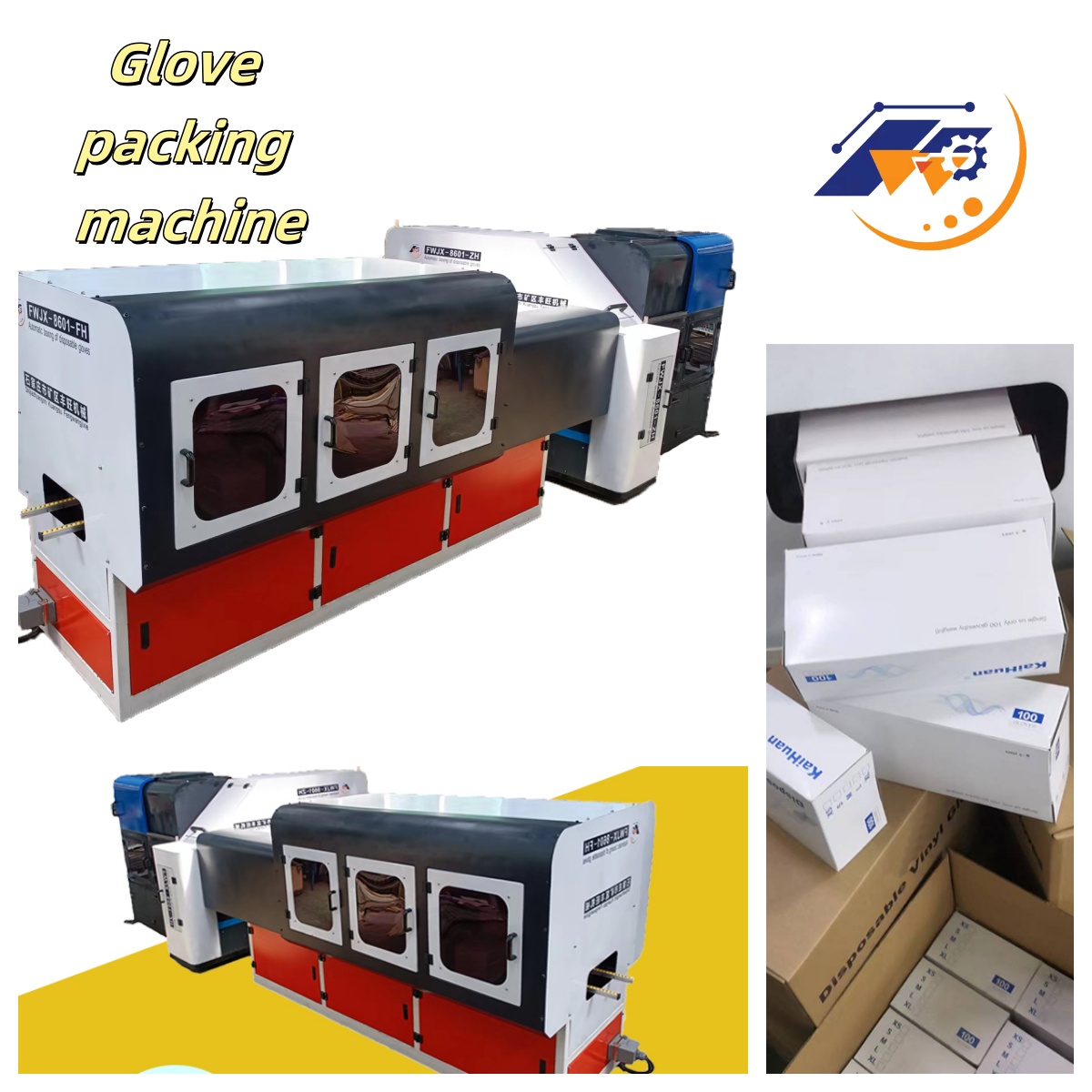Fengwang is a manufacturer of nitrile glove production machines, with over 20 years of expertise in nitrile glove manufacturing machinery and processes. We provide high-quality solutions for glove producers, earning us an excellent reputation in the glove machinery industry.
Nitrile Glove Production Process – How Are Nitrile Gloves Made?
1. Raw Material Preparation
The primary material for glove production is nitrile rubber (NBR), combined with chemical additives to enhance flexibility, chemical resistance, and durability. The mixture must be stirred evenly to eliminate air bubbles. Typically, the acrylonitrile content ranges between 18%-50%, ensuring optimal chemical resistance.
2. Latex Dipping
After the raw materials are prepared, cleaned, and dried, glove formers are dipped into a tank containing the nitrile rubber compound. A thin film of nitrile latex coats the formers, which, after drying, form the initial glove shape.
3. Beading (Cuff Rolling)
The glove edges are rolled to ensure easy wear and a neat cuff. Fengwang’s آلة خرز القفازات operates without a separate power unit, synchronizing with the production line speed. It automatically rolls the glove cuffs without manual intervention.

4. Glove Stripping
After chlorination, gloves must be removed from the formers and transferred to the next stage. Fengwang’s آلة نزع القفازات uses advanced mechanical principles to peel gloves off the formers with minimal failure rates.
5. Surface Treatment (Chlorination or Polymer Coating)
The chlorination process provides deep surface treatment, removing powder residue and reducing friction during wear.
6. Glove Packaging
Fengwang’s آلة تعبئة القفازات automatically counts and packages gloves (e.g., 100 gloves per box) at a speed of 6-8 boxes per minute, offering four sealing options. Proper storage (away from light and moisture) is essential to maintain product quality and prevent aging.

Key Challenges & Solutions in Nitrile Glove Production
Producing high-quality nitrile gloves requires strict control over every production stage. Based on customer feedback, Fengwang has identified common challenges and solutions to optimize production efficiency.
1. Insufficient Latex Viscosity
Problem: Poor fluidity during dipping leads to uneven glove thickness.
Solution:
Strictly control solvent ratios and use temperature-controlled mixing.
Monitor viscosity in real time and adjust chemical formulations if needed.
Filter the latex to remove impurities and undissolved particles.
2. Latex Gelation Too Fast or Too Slow
Problem: Improper curing affects glove formation.
Solution:
Adjust the sulfur/accelerator ratio in the vulcanization system.
Maintain latex storage temperature at 20-30°C.
3. Uneven Dipping & Thickness Variation

Problem: Gloves have inconsistent thickness due to uneven dipping speed or coagulant concentration.
Solution:
Optimize dipping parameters (immersion time, lifting speed).
Regularly check coagulant (e.g., Ca(NO₃)₂) concentration for uniformity.
4. Bubbles/Pinholes on Glove Surface
Problem: Air bubbles or micro-holes compromise glove integrity.
Solution:
Use vacuum deaeration to remove trapped air.
Ensure thorough former cleaning (acid/alkali wash + ultrasonic cleaning).
Adjust vulcanization temperature to prevent rapid solvent evaporation.
5. Incomplete Vulcanization (Sticky/Tearing Gloves)
Problem: Gloves remain tacky or weak due to insufficient curing.
Solution:
Optimize vulcanization (100-130°C for 5-10 min).
Adjust sulfur/accelerator ratios for better cross-linking.
6. Yellowing/Discoloration

Problem: Gloves turn yellow due to overheating or oxidation.
Solution:
Control vulcanization temperature to avoid localized overheating.
Add antioxidants (e.g., BHT) to prevent aging.
7. Difficult Stripping
Problem: Gloves stick to formers, increasing defects.
Solution:
Improve mold release agents.
Avoid over-vulcanization, which increases adhesion.
8. Sticky or Powdery Glove Surface
Problem: Residual stickiness or powder (talc) affects usability.
Solution:
Enhance chlorination/polymer coating.
Ensure complete vulcanization.
9. High Pinhole Failure Rate

Problem: Leakage due to impurities or thin latex film.
Solution:
Use high-precision filtration.
Optimize dipping parameters for uniform thickness.
10. Inconsistent Glove Sizing
Problem: Glove dimensions vary due to mold wear or latex shrinkage.
Solution:
Regularly calibrate former dimensions.
Stabilize vulcanization to control shrinkage.
By addressing these challenges, manufacturers can enhance glove quality, reduce defects, and improve production efficiency. Fengwang’s advanced machinery and expertise ensure a smooth, high-yield nitrile glove production process.





